
Distrophic changes in the intervertebral disc are called osteochondrosis. This problem can occur in a person at any age; intervertebral disc dysfunction causes many concomitant problems. How to prevent the development of cervical osteochondrosis? What alternative medicines and therapies are used in treatment?
Cervical osteochondrosis - what is it
The cervical spine consists of 7 vertebrae and 8 paired nerve nodes. Osteochondrosis of the cervical spine develops against the background of degeneration of the intervertebral pulp into fibrous tissue. In this case, pathological changes affect the nerve endings and vital ducts. Often, pathology affects the 7th and 8th vertebrae.
The disease is carefully disguised as other pathologies, which are indicated by attacks of headaches and discomfort in the neck. Patients may complain of dizziness, nausea, and stress. Often, the disease is confused with heart and blood vessel problems.
Important! Often, against the background of problems with the vertebrae, a person begins to suddenly lose consciousness, feel short of air, and the tongue may become numb.
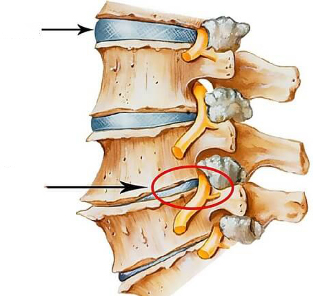
Cervical osteochondrosis is most commonly diagnosed in people over the age of 30, caused by the specific location of the human skeleton, persistent statistics and dynamic load. The disease develops rapidly younger, more recently, osteochondrosis occurs even in adolescents.
Causes of disease
Physiological and pathological processes affect the development of osteochondrosis. They are closely related, in medical practice they are always considered together.
Physiological changes are caused by irreversible age-related processes in the cartilage of the spine. They are localized in the central part of the intervertebral disc, manifesting as pinching the pulp by fibrous tissue. Discomfort occurs during nerve end irritation.
Pathological changes - in this case, the inflammatory area exceeds the cartilage tissue, causing severe irritation to the nerve endings, pinching the blood vessels. They appear with a background of improper nutrition, an inactive lifestyle, appearing in adolescents and people from the middle age category.
Important! In rare cases, osteochondrosis of the cervical spine can disappear on its own, or manifest itself in the form of short-term episodes. The human body has many compensatory and protective functions, which for some time can neutralize pathological changes in cartilage.
Provoking factor:
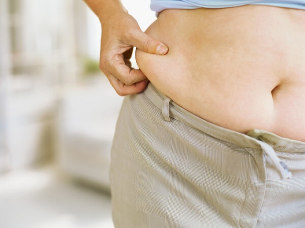
- inactive work, lack of regular physical activity;
- often stays forced in uncomfortable positions;
- overweight;
- nerve load, depressed state;
- injuries to the neck and occiput;
- hypothermia.
The cause of osteochondrosis can be a congenital anomaly, an autoimmune disease.
Key features
Cervical osteochondrosis is not always indicated by pain in certain parts of the spine, often the disease has a blurred clinical picture.
The main symptoms are dizziness, migraine, sudden changes in blood pressure.
When urgent hospitalization is needed:
- numbness, loss of movement of facial muscles or shoulder girdle;
- increased headache, accompanied by deterioration in general well-being;
- lack of coordination;
- loss of consciousness.
Pain in the cervical spine often radiates to the shoulder girdle and upper limbs. Its hallmark is paroxysmal pain syndrome, most often after waking up, sudden movements, while laughing, coughing and sneezing.
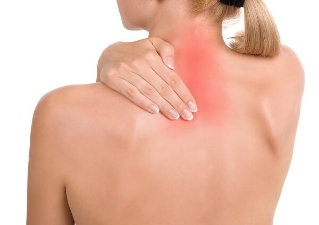
If osteochondrosis is in its early stages, the pain quickly disappears, almost always accompanied by cracks in the neck, muscles become weak, the skin loses sensitivity.
Important! With pathological changes in the 6th vertebra, pain can be observed in the thumb, with the defeat of the 7th vertebra, it affects the middle finger.
Symptoms of cervical osteochondrosis in women appear slower than in men - the average age is 50-55 years.
How osteochondrosis is associated with other diseases
Cervical osteochondrosis and blood pressure - the link between these pathologies has long been established. For osteochondrosis, precisely a sharp decrease in pressure during the day is characteristic, persistent hypertension does not exist in this disease.
Increased pressure on osteochondrosis is accompanied by migraines, noise in the head, pain in the arms, legs, chest. At the same time, the sensitivity of the skin in the collar area is reduced, the pressure can trigger a surge of pressure, staying prolonged in an uncomfortable position.
Cervical osteochondrosis and dizziness - occur against the background of severe pain syndrome, impaired cerebral circulation and transmission of nerve signals, problems with the vestibular apparatus.
With osteochondrosis, non-systemic dizziness is most often shown - there is no feeling of the object rotating, but the person is very sick, making it difficult for him to stay upright.
Important! With frequent dizziness attacks, you should visit not only a neuropathologist, but also THT, to exclude the presence of pathological changes in the nasopharynx.
Headaches accompany osteochondrosis in almost 90% of cases. It occurs against the background of vascular spasm, pinching of nerve endings, increased intracranial pressure. It manifests itself in different ways - pulsating, dull.
Headache attacks on osteochondrosis are similar to the sensations of high blood pressure, angina pectoris, heart attack, stroke.
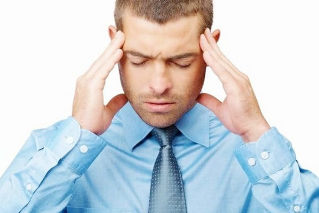
Panic attacks occur with osteochondrosis on the background of cerebral circulatory disorders. At the same time, a person experiences absurd fears, physical discomfort. The duration of the attack is from 2-3 minutes to an hour, they can be repeated several times a day. Panic attacks are accompanied by heavy headaches, relentless tears, apathy and lethargy. With severe attacks, you need to take sedatives, see a psychiatrist regularly.
Fear and depression occur with osteochondrosis with a background of persistent pain, forced changes in normal lifestyle.
Diagnostic methods
People suffering from osteochondrosis may experience pain in the back of the head, chest, arms - a blurred vision of this disease will complicate the initial diagnosis.
Prevents timely diagnosis and uncontrolled intake of painkillers. One feels healthy without pain. He sought medical help late, when an irreversible process developed in the tissues of the cervical joint.
Important! Only neurologists deal with the treatment of osteochondrosis.
External examination is to identify movement and pain in the neck. Afterwards, the doctor prescribes an X-ray in several calculated projections and tomography. If a hernia is suspected, magnetic resonance imaging scans should be performed. Doppler ultrasound is performed to assess the condition of arteries and blood vessels.
Principles of Drug Treatment
Medical treatment aims to relieve pain, inflammation, restore normal movement and blood circulation.
Main drug group:
- analgesics in the form of tablets and injections aimed at relieving pain syndrome;
- non-steroidal anti-inflammatory drugs and steroids;
- chondroprotectors help restore cartilage tissue;
- muscle relaxants relax muscles, used as an auxiliary agent for pain relief - it contains glycerin, benzimidazole, has a long list of contraindications;
- vitamin complex - must contain all vitamins of group B, D, E, retinol, ascorbic acid;
- artificial analogue of histamine - helps eliminate problems with the vestibular apparatus;
- means for external use in the form of gels, ointments - helps improve blood circulation, relieves cramps and pain, warms, relieves pain.
Important! Vitamins found in food are not enough to treat osteochondrosis.
Drugs that increase cerebral circulation in cervical osteochondrosis are mandatory components of therapy, they dilate blood vessels, improve blood flow. Nootropic drugs that increase metabolic processes in the brain, restore memory and thinking.
Surgery for osteochondrosis is rarely used. Surgery is indispensable for signs of paralysis of the upper limbs, acute circulatory disorders and cerebral edema.
Additional treatments include manual massage, push and pull therapy, dose pull, relaxation techniques and acupuncture.
How to treat osteochondrosis at home
Home treatment involves the regular implementation of special exercises, the use of special orthopedic devices. As a supportive therapy, you can use traditional medicine recipes.
Collar Shants are designed to relieve tension in the spine, reduce stress, strengthen neck muscles. The head and neck are glued to the correct position, which allows you to get rid of insomnia, preventing the development of pathological changes. You should wear the collar not all day, but 2-3 hours before bed.
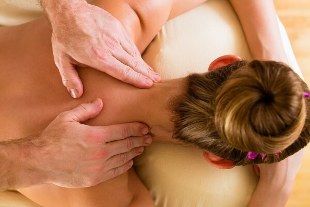
Self-massage will help relieve pain and cramps, while rubbing ointments that increase blood flow. The procedure should be done while sitting, the posture is comfortable, relaxed. Need to do a punch, a circular swipe, to touch not only the neck, but also the shoulder belt.
Important! With cervical osteochondrosis, any heating is prohibited, except bathing and sauna.
A healing bath removes pain and inflammation well, it allows the spine to relax. Water procedures should be performed daily, the course consists of 15-20 procedures.
Bathing Recipes:
- Mix 150 g of chamomile and mint, the mixture brews 5 liters of boiling water. Leave the infusion for 2 hours, strain.
- Take 20 g of mint, lemon balm and birch leaves. The collection is brewed in 6 liters of boiling water, after 2 hours filtered.
- To prepare a wise infusion, you need 300 g of ingredients and 5 liters of boiling water. The healing solution will be ready in 2 hours.
For oral administration, you can prepare an infusion of yarrow - this will help get rid of inflammation, cramps and pain quickly. Mix 230 ml of boiling water 6 g of grass, leave in a closed container for an hour. Take 15 ml 3 times a day.
A solution of 15 g of sea salt and 1 liter of water helps to overcome osteochondrosis. Boil the mixture, bring to a boil. In the composition, moisten the natural fabric, apply on the back of the neck.
Possible complications
With timely diagnosis and timely treatment, cervical osteochondrosis runs without certain complications. Otherwise, severe pathological changes occur that can lead to disability.
Why is cervical osteochondrosis dangerous?
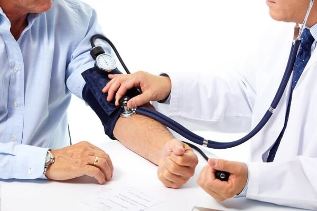
- vertebral artery syndrome - functional and organic changes caused by impaired blood circulation in the brain;
- high blood pressure, arrhythmias;
- numbness, weakness, atrophy of upper limb muscles;
- protrusion, hernia;
- VSD;
- neurological disorders.
Physiotherapy training for osteochondrosis
Exercise therapy for cervical spine osteochondrosis is able to restore nutrition to damaged tissues, restoring blood circulation.
During recovery gymnastics, it is forbidden to turn the head vigorously, making sharp turns. Only imitations of such movements are allowed. You can do one exercise for no more than 2 minutes - prolonged load can lead to complications of osteochondrosis.
An effective set of exercises for cervical osteochondrosis was developed by Shishonin. The principle is that all movements must be done smoothly, each position must be improved for 15-30 seconds. During gymnastics there should be no painful sensations, each exercise should be repeated 5 times.
Training description:
- Sit up straight, tilt your head to the right. When muscle tension appears, adjust its position. Make 5 slopes on each side.
- Bending the head forward and backward is done by analogy with previous exercises.
- Stretch your chin alternately to your left and right shoulders. The back is straight, you can't round it.
- Rotate the head left and right, in each position for 30 seconds.
- Keep making side rounds, but use extra arms. When turning to the right, the right hand should be on the left shoulder, and vice versa.
- Close your palms, lift your arms above your head, turn sideways.
- Straighten your arms, bring them to the side and slightly back, stretch your chin forward.
Precautions
Prevention of osteochondrosis consists of simple steps, if done regularly, serious health problems can be avoided. Especially prevention is necessary for the elderly and those who spend a lot of time sitting.
How to prevent osteochondrosis:

- take a hot shower every day for at least 10 minutes;
- frequent baths, saunas to relieve cramps and tightness in the neck;
- sleeping on orthopedic pillows and special mattresses;
- do a small warm-up for five minutes every hour while sitting.
The best sports for the prevention of osteochondrosis are swimming, yoga, aerobic exercise, special gymnastics to strengthen the cervical muscles.
People at risk are prohibited from running, jumping, or bodybuilding. Critical weight is 10 kg, weight should be borne with both hands. Alternatively, you can use a corset that protects the spine.
Sergei Bubnovsky well describes the preventive measures of osteochondrosis. In his book, you can find out which back pain is dangerous, how to restore health without injections and corsets, and get a special set of exercises.
Cervical osteochondrosis is a disease that can strike everyone. Timely diagnosis and prevention, a healthy and active lifestyle will help prevent the development of serious pathological changes in the spine, will give you good health and good mood.

















































